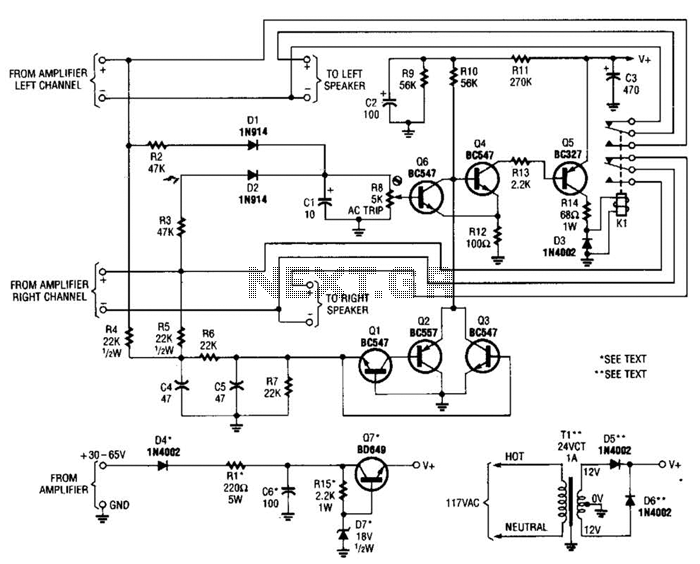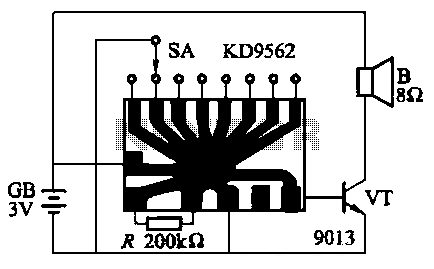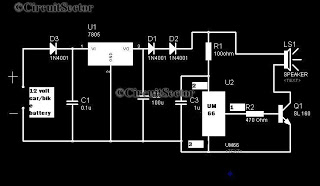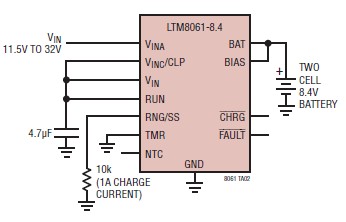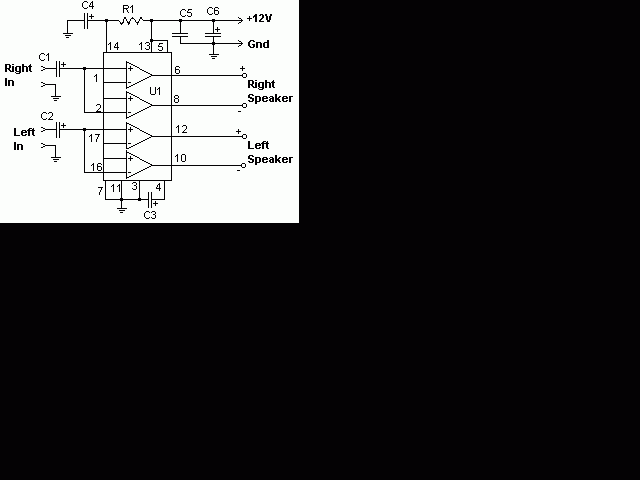
MINI BENCH AMPLIFIER CIRCUIT

This mini audio amplifier will test the audio stages in amplifiers such as the front end of FM bugs. You can also use it on lots of our other projects as well as the output stages of radios. It is a very handy piece of test equipment and will make a perfect addition to your collection.
The mini audio amplifier is designed to facilitate the testing of various audio components, specifically targeting the audio stages in amplifiers. It is particularly effective for evaluating the front-end circuitry of FM transmitters, often referred to as "FM bugs." The amplifier can also be utilized across a range of other electronic projects, providing versatility in its application.
This device typically comprises a simple circuit with an operational amplifier (op-amp) configuration, which may include additional components such as resistors, capacitors, and potentiometers for gain adjustment and frequency response tuning. The input stage of the amplifier is designed to accept signals from various sources, ensuring compatibility with both low and high impedance outputs.
The output stage is configured to drive standard audio loads, such as speakers or headphones, delivering a clean and amplified audio signal. The mini audio amplifier may also feature a power supply circuit, which could include a battery or an external power adapter, ensuring adequate power for optimal performance.
In terms of physical design, the mini audio amplifier is compact and often housed in a small enclosure, making it portable and easy to integrate into testing setups. The inclusion of input and output jacks allows for straightforward connections to test equipment or other audio devices.
Overall, this mini audio amplifier is an essential tool for audio testing and development, providing reliable performance for engineers and hobbyists alike. Its capability to interface with various audio stages makes it a valuable addition to any electronics toolkit.This mini audio amplifier will test the audio stages in amplifiers such as the front end of FM bugs. You can also use it on lots of our other projects as well as the output stages of radios. It is a very handy piece of test equipment and will make a perfect addition to your collection. 🔗 External reference
The mini audio amplifier is designed to facilitate the testing of various audio components, specifically targeting the audio stages in amplifiers. It is particularly effective for evaluating the front-end circuitry of FM transmitters, often referred to as "FM bugs." The amplifier can also be utilized across a range of other electronic projects, providing versatility in its application.
This device typically comprises a simple circuit with an operational amplifier (op-amp) configuration, which may include additional components such as resistors, capacitors, and potentiometers for gain adjustment and frequency response tuning. The input stage of the amplifier is designed to accept signals from various sources, ensuring compatibility with both low and high impedance outputs.
The output stage is configured to drive standard audio loads, such as speakers or headphones, delivering a clean and amplified audio signal. The mini audio amplifier may also feature a power supply circuit, which could include a battery or an external power adapter, ensuring adequate power for optimal performance.
In terms of physical design, the mini audio amplifier is compact and often housed in a small enclosure, making it portable and easy to integrate into testing setups. The inclusion of input and output jacks allows for straightforward connections to test equipment or other audio devices.
Overall, this mini audio amplifier is an essential tool for audio testing and development, providing reliable performance for engineers and hobbyists alike. Its capability to interface with various audio stages makes it a valuable addition to any electronics toolkit.This mini audio amplifier will test the audio stages in amplifiers such as the front end of FM bugs. You can also use it on lots of our other projects as well as the output stages of radios. It is a very handy piece of test equipment and will make a perfect addition to your collection. 🔗 External reference
